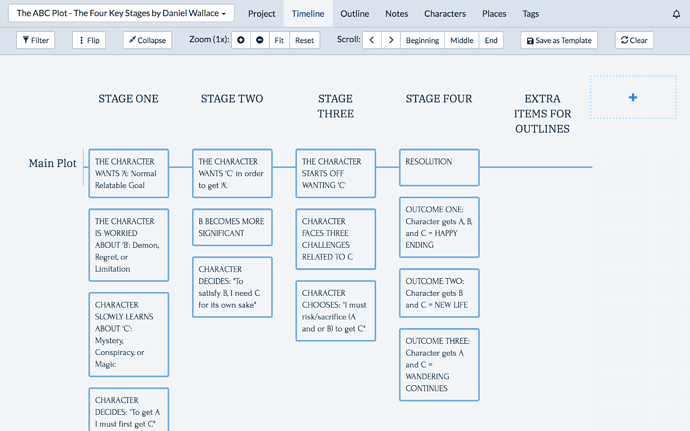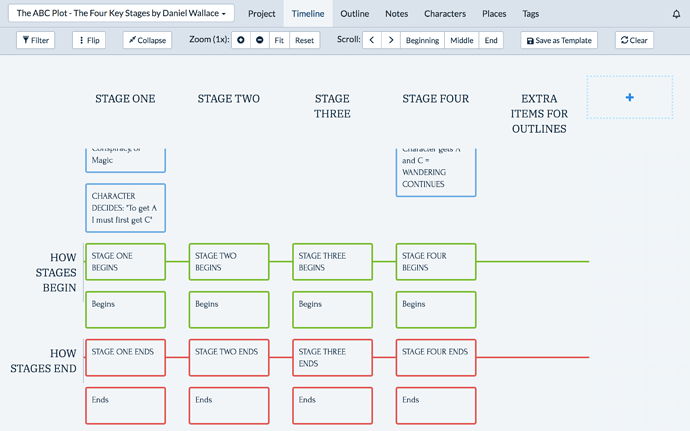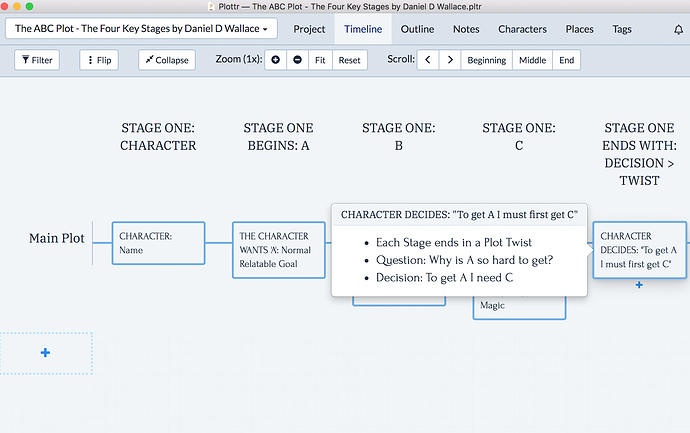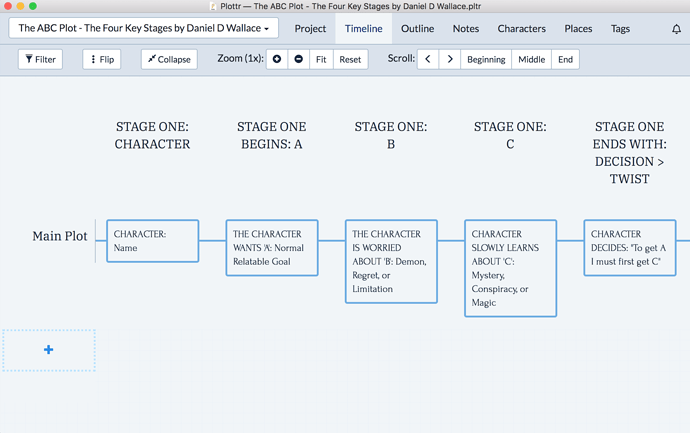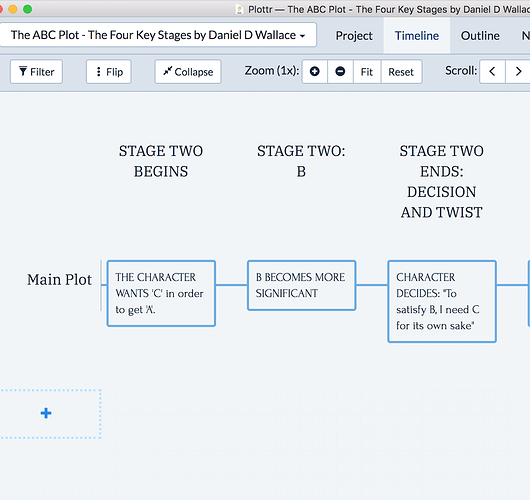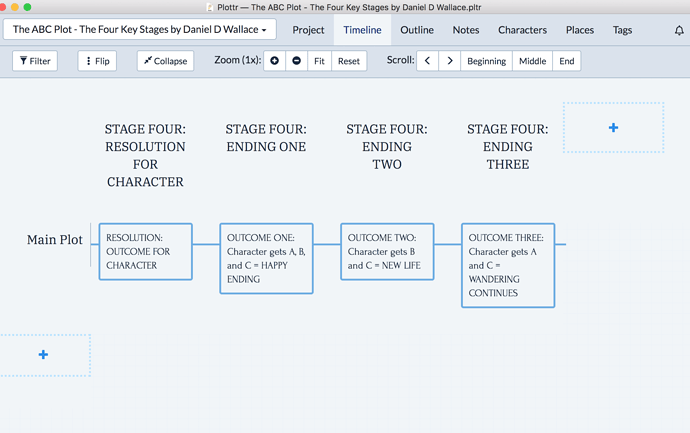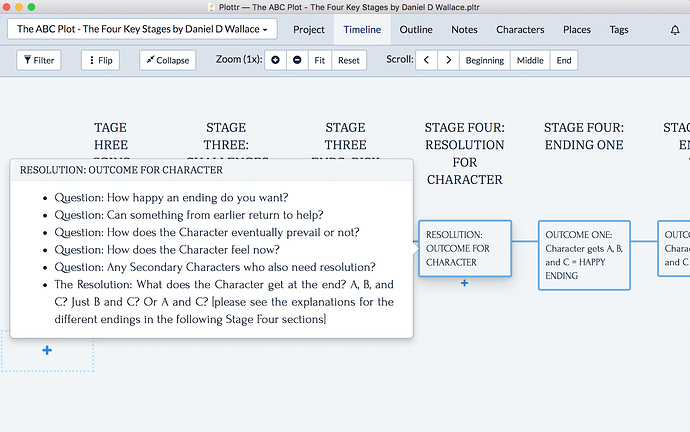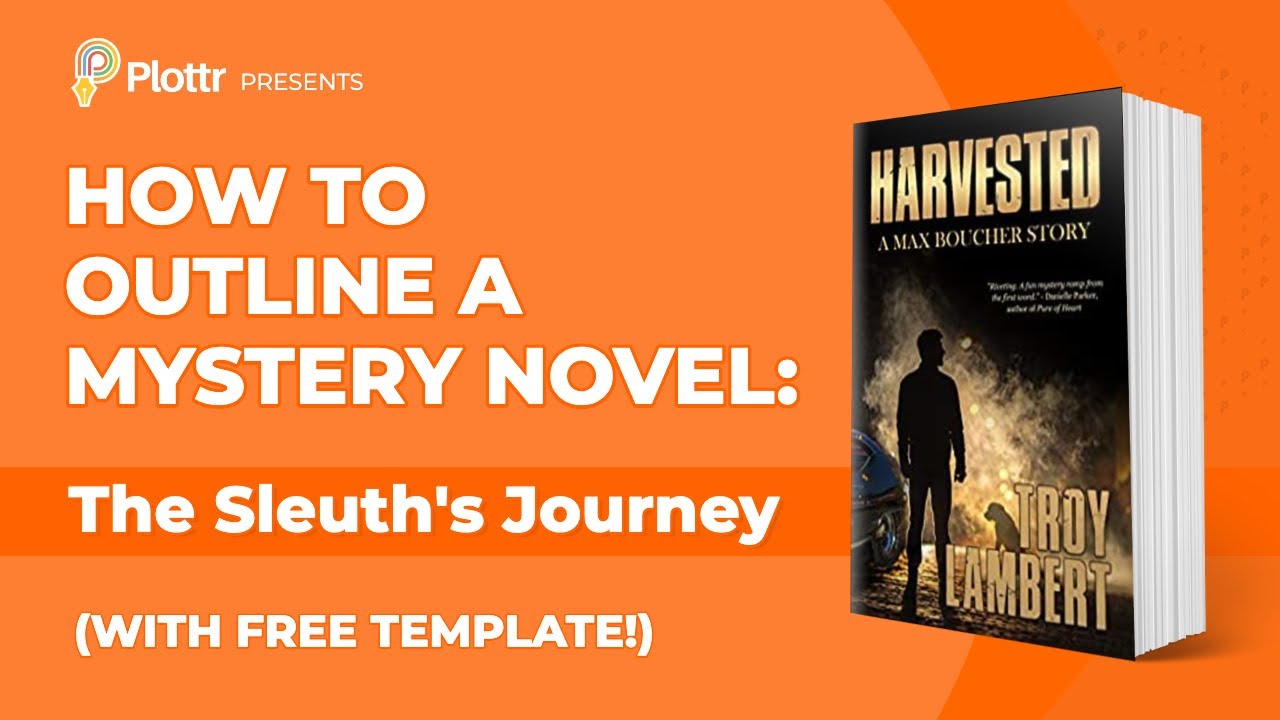I would be curious to hear how you are using Plottr – or another plotting / storyboarding tool. How are you using chapters? Scenes? Tags? Character plotlines…?
I have written most of my book as a pantser (how do you spell it???) but I am now trying to plan out my WIP before getting sucked into composing the first sentence. I am using a combination of the Story Engine that Joe Nassisse created plus a scene outline written in Excel (now moving to it being on separate stickies). Each scene description is usually less than 20 words in total. With my cozy mysteries (I’m trying to remember to spell it with a z not an s), I am going for shorter chapters, often only one scene.
books, plural - should have proofread it!
I’m still trying to find the time to sit down with it and learn how to use it and what it can do for me. My life has been upside down and hectic since a family crisis hit at the end of October. I am so far behind on everything in my life, including writing. But I’m looking forward to some “me” time after the holidays to try to get back into some kind of schedule.
I’ve been using Plottr since last summer and like it a lot. It’s an automated way to write notecards and move them around as needed. It’s flexible, so you can use it in ways that work for you.
I like to write scene cards and then put them in a timeline, but just as with paper notecards you can write anything you want on the cards and arrange them how you like. I like chapters going across and plot lines going down, which results in the scene “cards” where the lines intersect.
What I like most is “seeing” how the various plot lines in the story come together (or not), and seeing how each plotline develops. Plottr provides several example stories (like Pride and Prejudice and The Three Little Pigs), so you can see examples of how stories could be organized.
Plottr also comes with several templates of popular writing methods (such as SnowFlake). I’ve had fun trying out the templates to see how they affect how I think about my stories. (I have a lot of story ideas and about a half-dozen stories in Plottr files.) You start a “new” file and select the template you want to use and then start adding your story ideas. I’ve come up with new story ideas when I’ve tried using some of the templates.
You can also avoid using any template and just get a generic Plottr file to start your story, and you can make your own templates. For example, you could set up the ABC template in Plottr.
I’ve tried revising the Michael Hauge template in my various stories and it’s gotten a little complicated. I’m trying to revise less and enter more of my story ideas and then modify the template later, if needed. To avoid confusing myself, I decided to get a complete book in Plottr and then determine if I need to modify the template.
The software also allows you to enter character, place, and note info, and to set up tags you can attach. I love the character, place, and notes, but am still exploring how to use the tags. They give you a whole new level of flexibility. I think Plottr is easy to get started using, but as you gain experience, you become more aware of just how flexible it is.
I haven’t figured out my “best” way to use Plottr. One reason is the flexibility it gives you. But another is I took some online classes from Robert McKee this spring and summer, and I’ve also been going back over the ABC plot, so basically I’m still playing with my stories. Doing this has been fun in Plottr and a lot easier than doing it using paper note cards.
Hi Daniel! I’m sorry I missed the Plottr webinar. Is there a replay? Thanks.
May I share a screenshot/s when I’ve completed entering data re my improved use of the ABC plot course, @Danielw?
Sure, Lita! Go for it.
@Danielw  So my mission today - which I accepted - was to create a template for The ABC Plot - The Four Stages. This is a screen grab of the overview page in Plottr (the other handouts are in the same template) and if you can see it okay, I’ll screen grab the rest of the template in other messages on here:
So my mission today - which I accepted - was to create a template for The ABC Plot - The Four Stages. This is a screen grab of the overview page in Plottr (the other handouts are in the same template) and if you can see it okay, I’ll screen grab the rest of the template in other messages on here:
Travelling vertically this is the next section before what I’ve called the Outline starts - I’ll have to change the layout of this first attempt at a template because it doesn’t flow (that will be tomorrow’s job!):
This is my second attempt, @Danielw . When I hover of the sections on the plotline, there are the notes and questions I’ve added from the ABC handout sheets. I’ve given a couple of examples, in attached screenshots. All on the horizontal - nothing vertical this time. The Outline page makes sense now. Apologies if the images are too big, that’s a techno thing I need to master.
I’m just starting but so far, my favorite function is the ability to tag notes and research to chapters and/or characters. I also have a tag for Updates so I can track all the changes I intend to make to chapters I’ve already completed. I have a nasty habit of rewriting and rewriting instead of moving forward. This allows me to move forward knowing that I won’t lose the ideas.
While I use the plot lines to keep track of subplots, main plot, and romantic plot usually, my favorite way to use Plottr is as a world bible/world building tool. I get very visual with the characters, notes and elements and keep it open while writing as a universal reference.
Just bought Plottr (thanks @Danielw for helping get us that nice discount) a couple days ago and plugged my WIP into it. Instead of using chapters or scenes, I’m going by dates since all my scenes have a date stamp. So far, I’ve been able to ID a couple places where one plot line disappears (and shouldn’t).
I like the image feature, so that’s been interesting digging up pics for characters. It’s nice to have a list of all the places in my story too so I don’t have to keep searching the Word doc for them. 
Got to put one of the ficfiction pieces I’m working on into Plottr yesterday. It’s fascinating to see the separate story threads and how they weave through the story as a whole.
I purchased Plottr! I’ll be teaching a novel writing course next month, and I thought it might be a good way to show students the plot breakdown. Excited to give it a try! Thank you for all the tips here. I am excited to get started with it and see how it works.
In case it’s of interest to others, here is a recent YouTube Plottr class that explores How to Outline a Mystery and includes The Sleuth arc. There is a free Plottr template that comes with it.
Hey Chelsea! How did your writing course go? I’m thinking of doing the same and planned on teaching my students how to use Trello for story boarding (because it has functions that allow them to tag me with questions in each story card) but I am tempted to teach Plottr instead.
Thanks!
Hi Jess! I ended up just using the screen share function to show students how I’d structured my scenes using plottr. They didn’t seem too interested in using any apps other than Zoom to conduct the class, so I didn’t focus on it much. Of course, depending on your students and their level of comfort with trying new programs, you may have a totally different experience.
Good luck with your class!
Thank you SO much for getting back to me on this. I appreciate it. I’ve been running free author meetups in selfpubhub.org but I’d love to get over imposter syndrome and monetize some of my services. Happy writing! Jess

